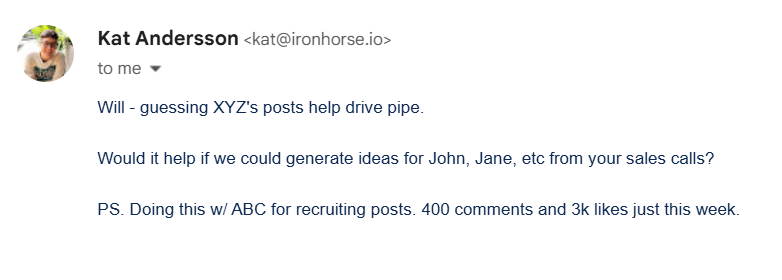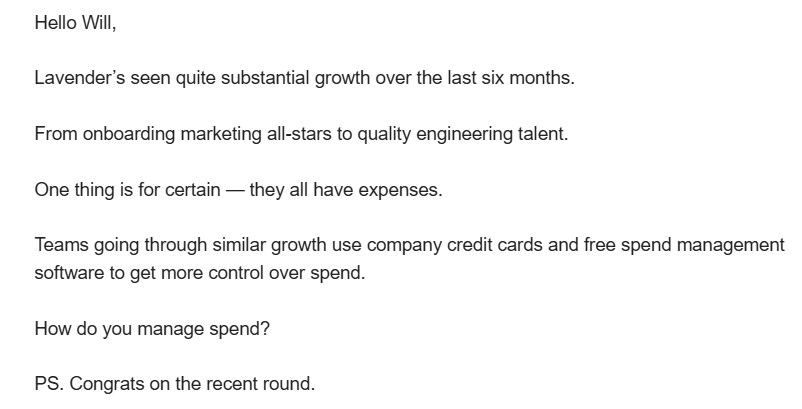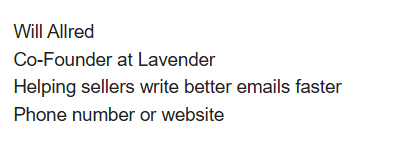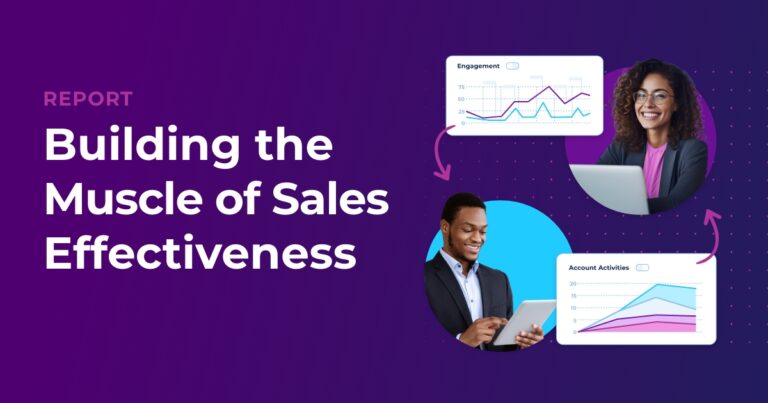Blog

As marketers, we’re not daunted by sending out marketing emails to lists of thousands. Your demand gen team needs a broadly relatable email that will engage a wide variety of people? No sweat.
But when Sales needs a cold outreach sequence with emails that will be personalized to each individual recipient? Don’t be tempted to craft them like you normally would a marketing email. These are very different beasts. With very different best practices.
We recently had a genuinely great time with Will Allred of Lavender on our Mastering Sales Emails Coffee Break. Lavender helps sales teams write effective emails, making Will the perfect expert to come in and help us live review some sales emails.
The first thing our audience learned was that sales emails are not marketing emails. For example, things that might work great for your marketing audience—like personalization tokens in subject lines—actually hurt you if you add them to sales emails.
For Marketing to truly support sales effectiveness, it’s crucial to understand these differences. Here are six best practices for crafting effective cold outreach emails, drawn from our Coffee Break session with Lavender.
1. Write short, simple subject lines.
“That first name token in the subject line actually crushes your chance of getting a response by about 11%. You assume that there’s a pitch in there, right? It triggers what I like to call your mental spam filter.” – Will Allred
For one-to-one sales emails, you want to avoid subject lines that read like mass messages. Rather, write your subject line as if you were sending this email to someone you know. Keep it concise, neutral, relevant to that person and their business and focused on clarity over grabbing attention.
Original:

Rewritten:

Or

2. Keep emails short.
“Here’s what’s important to them: Hey, I showed up and saw you have this problem. Here’s what told me you had this problem. I’ve seen that problem before, is that something you had? Am I even close to being on the nose to have a conversation with you about that?”
The goal with sales emails is to get to the benefit as quickly as possible, since cold outreach emails only get viewed for around 9 seconds on average. Will recommended going through the exercise of trying to fit your message into a 280 character tweet. Once you pass the limit, start cutting out unnecessary details—starting with any parts that you’ve made more about yourself than about your recipient.
Original:
![Sales email that reads: [first name] - awesome to see XYZ posting on LinkedIn. Given you sell to HR - guessing LinkedIn is big for pipeline. Worth seeing how we can help John, Jane & team post too? Execs & sellers usually don](https://cdn.prod.website-files.com/67d4a5caab687ad5fd5468b3/689fc8599bd315592baf864e_Screenshot-2024-11-04-125903.png)
Rewritten:

3. Write in a casual, conversational tone.
“It’s a text that you’re sending to a friend that you don’t know yet.”
Your email should sound like you’re having a conversation with a friend or colleague. Basically, you want to avoid formal-sounding messages at all costs—especially considering the number of AI-generated sales emails in peoples’ inboxes, which tend to be long and overly formal.
An easy way to instantly make your message more casual is to shorten your sentence structure, including by implying sentence subjects: e.g. Read about your focus vs. I read about your focus.
Original:

Rewritten:


Tired of AI copy that sounds like…AI copy? Make it sound more like you. Read more
4. Go beyond surface-level personalization.
“We’re wired to look for names and threads that we recognize over everything else in our inbox. Using names that people know within their organization is a massive benefit.”
Personalization does not just mean adding a personalization token after “Hey” at the beginning of your email. You want to show you’ve done meaningful research by referencing something specific to their business or role—or referencing someone in their organization they know.
Here’s an example of authentic personalization from Lavender:

5. End your first email with a question, not a link.
“I wouldn’t share a related piece of content in the first email, I would do it as a follow up.”
In your first cold email, you’re looking to start a conversation. You achieve that by asking a relevant question—not by immediately throwing a meeting link at them. Since it’s so ingrained to end every sales email with a link, Will gave us some details to back up his assertion:
- Meeting links trigger mental spam filters.
- Especially in a cold sequence, people just aren’t ready to book a meeting after the first outreach.
- Links in a cold email easily look like phishing attacks, especially if you don’t have your link tracking set up correctly.
Instead, try ending your first cold outreach email with a question. Whether or not anyone replies, it will still help build a more authentic-feeling connection and name recognition. Then drop your relevant content or resource in the follow-up email.
Examples:

Or

6. Fully leverage your signature line.
“Your signature line is a massive billboard for your company. Use that to your advantage.”
Your signature should be clean and simple, with just your name, title, how to find you and a short tagline about what you do—which is definitely jarring for people used to sending marketing-style signatures. The key, then, is to be smart with that tagline. And it doesn’t have to be one size fits all. Think about how you can adjust it to resonate with the persona you’re writing to.
Example:

The Iron Horse insight.
Regardless of whether Sales is crafting their own emails from scratch, or with support by Marketing, the ingredients remain the same. You have to understand the problems your recipient has and how your product solves those problems.
Marketing holds a powerful position as the organization’s earpiece to its audience. By channeling market insights and customer understanding back to Sales, Marketing not only enhances sales effectiveness but also ensures that every outreach speaks directly to what customers care about most. When Sales and Marketing align in this way, they can turn cold outreach into meaningful conversations—and ultimately, into long-term customer relationships.
In today’s market, effective sales isn’t just about sending more emails—it’s about sending the right message to the right person at the right time.

Learn what Marketing and Sales need from each other to deliver on ABM. Explore report
Subscribe to our blog.
Get unstuck with the most interesting business ideas and our insights delivered to your inbox.